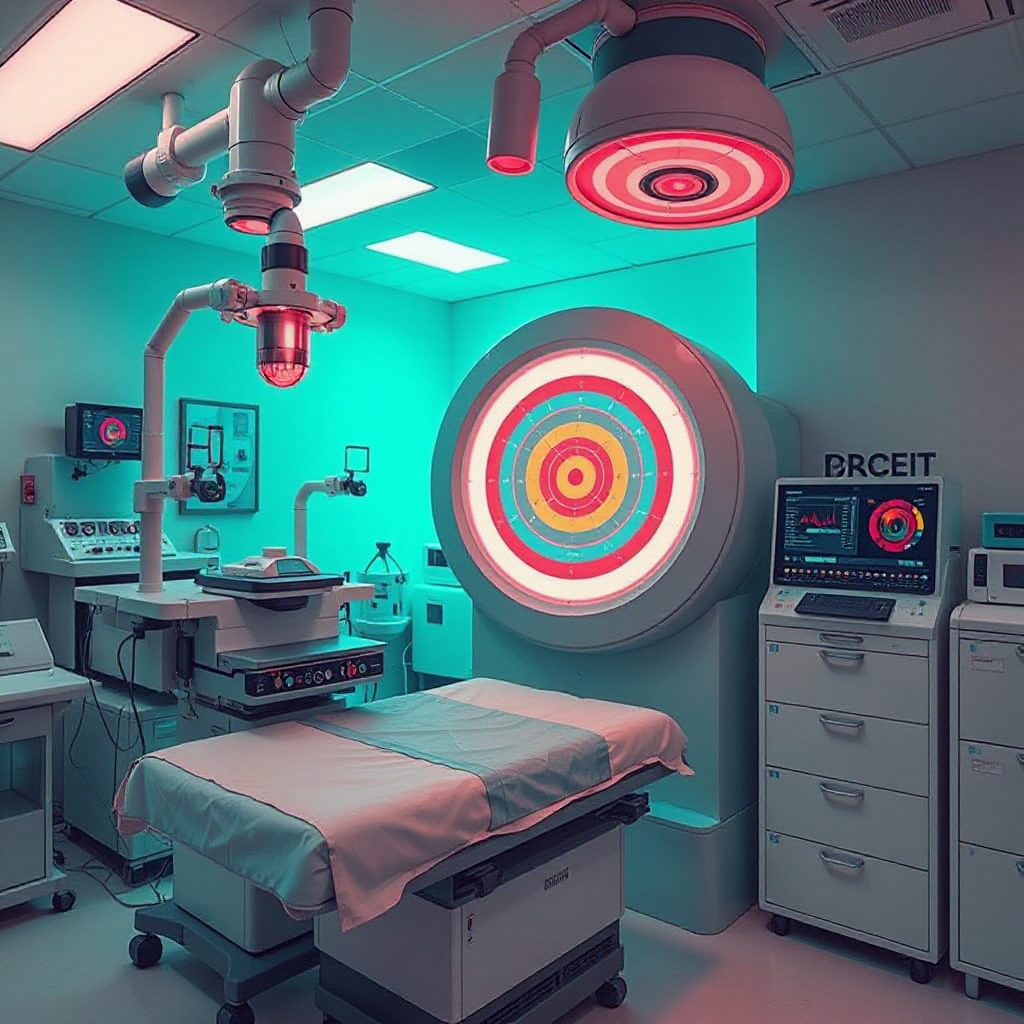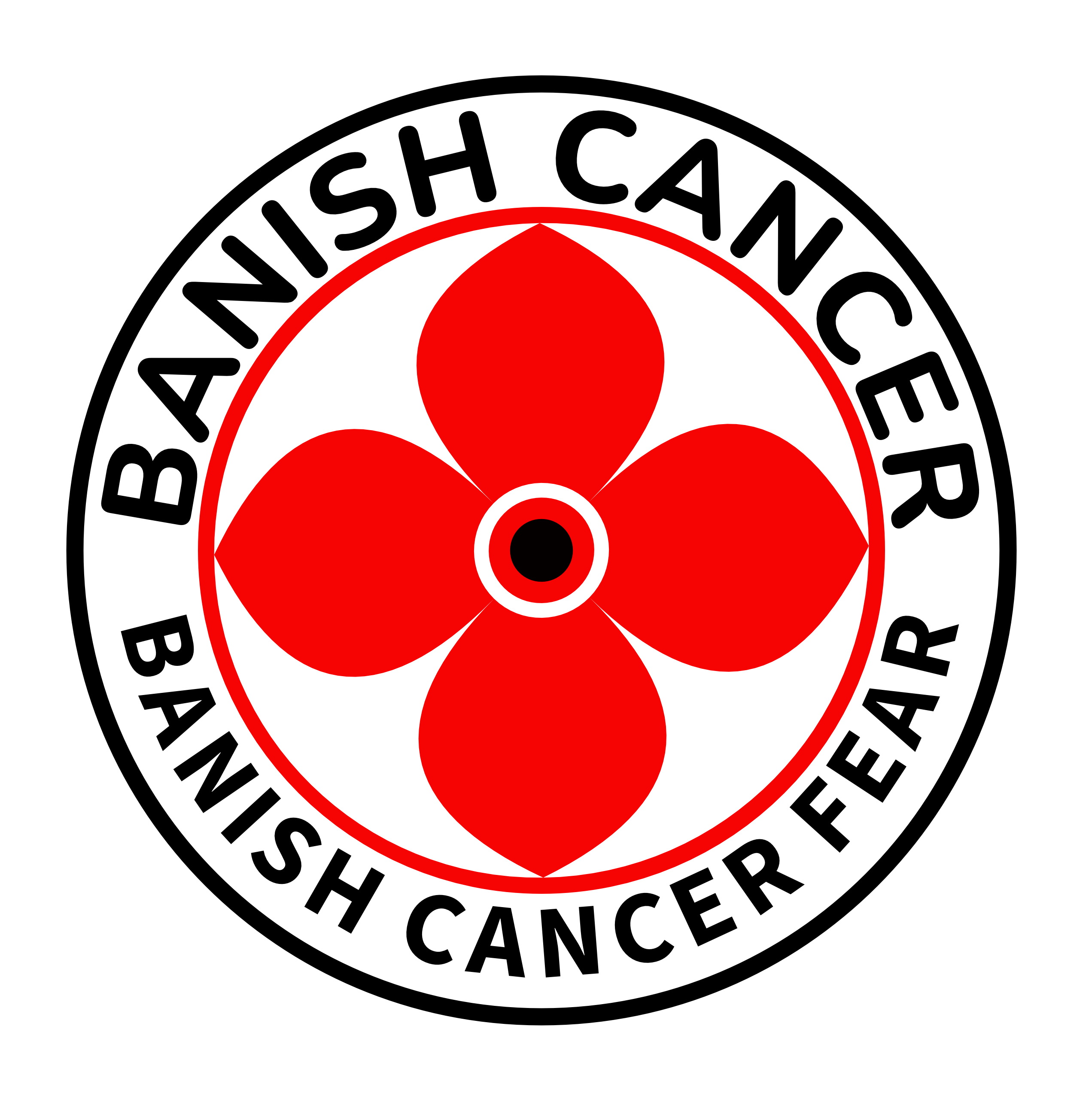Understanding Targeted Therapy for Cancer Treatment

Targeted therapy focuses on proteins that drive cancer cell growth and spread. This approach allows you to receive treatments tailored to your cancer's unique characteristics. Recent advancements highlight its potential. For example:
The FDA approved therapies for specific mutations, like BRAF V600E in thyroid cancer and KRAS G12C in lung cancer. Antibody-drug conjugates, such as trastuzumab deruxtecan, now treat HER2-positive tumors effectively.
These breakthroughs demonstrate how targeted therapy transforms cancer care, offering precision and hope for better outcomes.
Key Takeaways
Targeted therapy works on certain proteins in cancer cells. It gives a personalized treatment and protects healthy cells.
This method causes fewer side effects than regular chemotherapy. It helps you feel better during treatment.
Regular check-ups and talking with your doctor are important. They help change the plan if needed and make it work well.
Joining clinical trials can let you try new treatments. It also helps improve cancer care for others.
Knowing your cancer's special traits helps pick the best therapy.
What is Targeted Therapy?
Definition and Purpose
Targeted therapy is a modern cancer treatment that focuses on specific molecules driving cancer cell growth and survival. Unlike traditional treatments, it zeroes in on proteins or genes unique to cancer cells. This precision allows you to receive therapies tailored to your cancer's characteristics. By targeting these specific elements, the treatment disrupts cancer cell functions while sparing most healthy cells. This approach aims to improve effectiveness and reduce side effects.
Role in Precision Medicine
Precision medicine uses detailed information about your genes and proteins to create personalized treatments. Targeted therapy plays a key role in this approach. It identifies mutations or abnormalities in cancer cells through advanced techniques like next-generation sequencing. For example, if your cancer has a specific mutation, such as HER2 or EGFR, targeted therapy can block the pathways these mutations use to grow. This strategy ensures that your treatment is as specific and effective as possible.
How It Differs from Traditional Cancer Treatments
Targeted therapy differs significantly from traditional chemotherapy. Chemotherapy kills all rapidly dividing cells, including healthy ones, which often leads to more side effects. In contrast, targeted therapy focuses only on cancer cells. The table below highlights the main differences:
Aspect | Targeted Therapy | Traditional Chemotherapy |
|---|---|---|
Mechanism | Focuses on specific molecules important for cancer cell growth | Kills all rapidly dividing cells, regardless of type |
Personalization | Identifies mutations through next-generation sequencing | Generally not personalized |
Side Effects | Often fewer side effects due to targeting cancer cells | More side effects due to damage to healthy cells |
This comparison shows how targeted therapy offers a more refined and patient-specific approach to cancer care.
Types of Targeted Therapy

Small-Molecule Drugs
Mechanism of Action
Small-molecule drugs are designed to penetrate cells easily, making them effective for targeting components inside cancer cells. These drugs work by interfering with specific processes that cancer cells rely on to grow and survive. For example, angiogenesis inhibitors block the formation of new blood vessels that supply cancer cells with oxygen and nutrients. Proteasome inhibitors disrupt normal cell functions, leading to cancer cell death. Signal transduction inhibitors alter the signals that cancer cells use to grow and divide. By targeting these mechanisms, small-molecule drugs help slow or stop cancer progression.
Administration Methods
You typically take small-molecule drugs in pill or capsule form, making them convenient for at-home treatment. This oral administration allows you to maintain your daily routine while undergoing therapy. However, your doctor may recommend regular check-ups to monitor your response to the treatment and adjust the dosage if necessary.
Monoclonal Antibodies
Mechanism of Action
Monoclonal antibodies are laboratory-made proteins that mimic your immune system's ability to fight harmful invaders. These antibodies attach to specific targets on the surface of cancer cells. For instance, some monoclonal antibodies block signals that cancer cells need to grow, while others mark cancer cells for destruction by your immune system. This targeted approach enhances the effectiveness of your treatment while minimizing harm to healthy cells.
Administration Methods
Monoclonal antibodies are usually administered through an intravenous (IV) infusion. This method ensures the medication enters your bloodstream directly, allowing it to reach cancer cells more effectively. Infusions often take place in a clinic or hospital setting, where healthcare professionals can monitor you for any immediate side effects. Depending on your treatment plan, you may receive these infusions weekly, biweekly, or monthly.
Cancer Types Treated | |
|---|---|
Rituximab (Rituxan) | Non-Hodgkin lymphoma (NHL) and others |
Trastuzumab (Herceptin) | Breast and stomach cancers |
Brentuximab vedotin (Adcetris) | Targets CD30 antigen in lymphocytes |
Ado-trastuzumab emtansine (Kadcyla) | Targets HER2 protein in breast cancer |
By understanding the differences between small-molecule drugs and monoclonal antibodies, you can better appreciate how targeted therapy tailors treatment to your specific cancer type.
How Targeted Therapy Works Against Cancer

Boosting the Immune System
Targeted therapy enhances your immune system's ability to fight cancer in several ways:
It can mark cancer cells, making them easier for your immune system to identify and destroy.
Some therapies trigger your immune system to attack cancer cells directly.
Certain drugs improve your immune response, increasing its effectiveness against tumors.
By strengthening your immune system, targeted therapy helps your body fight cancer more efficiently.
Interrupting Cancer Cell Growth Signals
Cancer cells rely on specific signals to grow and spread. Targeted therapy disrupts these signals by interfering with proteins that tumors use to thrive. For example:
Some therapies block the pathways that cancer cells use to divide and multiply.
Others inhibit signals that promote the formation of new blood vessels, which tumors need to grow.
This approach stops cancer cells from receiving the instructions they need to survive, slowing their progression.
Preventing Angiogenesis
Angiogenesis, the process of forming new blood vessels, plays a critical role in cancer growth. Tumors release chemical signals to stimulate blood vessel formation, ensuring a steady supply of oxygen and nutrients. Without this blood supply, tumors cannot grow beyond a few millimeters. Targeted therapy includes angiogenesis inhibitors, which block the formation of these blood vessels. By cutting off the tumor's blood supply, these therapies effectively starve the cancer cells and limit their ability to spread.
Note: Preventing angiogenesis is especially important for treating solid tumors, as they depend heavily on new blood vessels for survival.
Delivering Toxins to Cancer Cells
Some targeted therapies deliver toxins directly to cancer cells. These therapies use a "Trojan horse" approach. They attach a toxic substance, such as chemotherapy or radioactive particles, to a molecule that specifically targets cancer cells. Once the therapy binds to the cancer cell, it releases the toxin, killing the cell from within. This method minimizes harm to healthy cells, making it a more precise treatment option.
For example, antibody-drug conjugates (ADCs) combine monoclonal antibodies with powerful toxins. The antibody identifies and binds to a specific protein on the cancer cell's surface. After binding, the toxin enters the cell and disrupts its internal processes, leading to cell death. This approach has shown success in treating cancers like breast and bladder cancer.
Tip: If your doctor recommends this therapy, ask about the specific ADCs used and their potential side effects.
Inducing Cancer Cell Death
Targeted therapy can also trigger cancer cells to self-destruct. This process, called apoptosis, is a natural way for the body to eliminate damaged or abnormal cells. Cancer cells often avoid apoptosis, allowing them to grow uncontrollably. Targeted therapies restore this process by interfering with proteins that prevent cell death.
For instance, BCL-2 inhibitors block a protein that helps cancer cells survive. By targeting this protein, the therapy forces the cancer cells to undergo apoptosis. This strategy is particularly effective for blood cancers like leukemia.
Hormone Blocking in Hormone-Dependent Cancers
Some cancers, like breast and prostate cancer, rely on hormones to grow. Targeted therapy blocks these hormones or their receptors, cutting off the cancer's fuel source. Hormone-blocking therapies include drugs like tamoxifen, which prevents estrogen from binding to cancer cells, and androgen receptor inhibitors, which reduce testosterone's effects.
This approach slows cancer growth and can even shrink tumors. It is often used alongside other treatments, such as surgery or radiation, to improve outcomes.
Benefits and Limitations of Targeted Therapy
Benefits
Precision in Targeting Cancer Cells
Targeted therapy focuses on specific molecules or proteins that cancer cells rely on to grow. This precision allows you to receive treatments tailored to your cancer's unique characteristics. By zeroing in on these targets, the therapy minimizes harm to healthy cells. For example, therapies designed for HER2-positive breast cancer specifically block the HER2 protein, leaving other cells unaffected. This targeted approach increases the effectiveness of your treatment.
Reduced Damage to Healthy Cells
Unlike traditional chemotherapy, which affects all rapidly dividing cells, targeted therapy spares most healthy cells. This reduces the likelihood of severe side effects. You may experience fewer issues like hair loss or nausea, which are common with chemotherapy. This makes targeted therapy a more tolerable option for many patients. It allows you to maintain a better quality of life during treatment.
Improved Survival Rates for Certain Cancers
For some cancers, targeted therapy has significantly improved survival rates. For instance, patients with chronic myeloid leukemia (CML) have benefited from drugs like imatinib, which targets the BCR-ABL protein. These advancements give you a better chance of managing your cancer effectively. In some cases, targeted therapy can even lead to long-term remission.
Limitations
Resistance Development in Cancer Cells
Cancer cells can adapt and develop resistance to targeted therapy over time. This means the treatment may become less effective as the cancer evolves. For example, mutations in the targeted protein can prevent the therapy from binding effectively. If this happens, your doctor may need to adjust your treatment plan or explore alternative options.
Challenges in Drug Development for Certain Targets
Not all cancers have clear targets for therapy. Some lack specific proteins or mutations that can be easily targeted. This makes drug development more challenging. If your cancer falls into this category, you may not have access to targeted therapy options. Researchers continue to work on identifying new targets, but progress can be slow.
Note: While targeted therapy offers many benefits, it is not a one-size-fits-all solution. Discuss your options with your healthcare provider to determine the best approach for your situation.
Side Effects of Targeted Therapy
Common Side Effects
Diarrhea, Liver Problems, and Blood Clotting Issues
You may experience diarrhea as a common side effect of targeted therapy. This happens because the treatment can affect the cells lining your digestive system. Liver problems, such as elevated liver enzymes, may also occur. These issues often require regular blood tests to monitor your liver function. Additionally, targeted therapy can lead to poor blood clotting, increasing your risk of bleeding or bruising.
Tip: Stay hydrated and eat smaller meals to manage diarrhea. Consult your doctor if symptoms persist.
High Blood Pressure, Fatigue, and Mouth Sores
High blood pressure is another frequent side effect. It occurs because some therapies affect blood vessel function. Fatigue, caused by low red blood cell counts, can make you feel tired or weak. Mouth sores may develop, making it uncomfortable to eat or drink.
Other related symptoms:
Constipation
Swelling in your hands, feet, or face
Nail Changes, Hair Color Loss, and Skin Problems
Targeted therapy can cause changes to your nails, such as sores around your fingernails or toenails. You might notice hair color loss or skin issues like rashes, itching, or dryness. These effects occur because the therapy impacts rapidly dividing cells, including those in your skin and hair.
Note: Use gentle skincare products and avoid sun exposure to reduce irritation.
Rare Side Effects
Formation of Holes in the Digestive Tract
In rare cases, targeted therapy may lead to the formation of holes in your digestive tract. This condition, known as gastrointestinal perforation, can cause severe abdominal pain and requires immediate medical attention.
Other rare but serious side effects include:
Autoimmune reactions, where your immune system attacks healthy organs.
Heart damage, particularly with anti-HER2 therapies.
Severe allergic reactions, which may require emergency care.
Managing Side Effects
Medications and Supportive Care
Managing side effects is an essential part of your treatment plan. Your doctor may prescribe medications to address specific symptoms, such as anti-nausea drugs or creams for skin irritation. Supportive care strategies can also help:
For fatigue: Balance rest with light activity and maintain a healthy diet.
For skin issues: Use recommended moisturizers and avoid harsh soaps.
For diarrhea: Stay hydrated and eat bland foods.
For nausea: Practice relaxation techniques and adjust your diet.
Tip: Always inform your healthcare team about any side effects you experience. They can adjust your treatment or recommend additional care to improve your comfort.
What to Expect During Targeted Therapy
Treatment Administration
Locations (Home, Clinic, or Hospital)
Targeted therapy can be administered in various settings, depending on the type of treatment and your specific needs. Some therapies, like small-molecule drugs, are taken orally at home, offering you the convenience of managing treatment in your own space. Others, such as monoclonal antibodies, require intravenous (IV) infusions, which are typically done in clinics or hospitals. These locations include facilities in areas like North Bergen, Riverdale, and Toms River, among others. Receiving treatment in a professional setting ensures that healthcare providers can monitor you for any immediate side effects and provide support as needed. The flexibility of these options allows you to choose what works best for your lifestyle and comfort.
Frequency and Cycles of Treatment
The frequency of targeted therapy depends on your treatment plan. Some therapies involve daily oral medications, while others require weekly or monthly infusions. Your doctor will determine the cycle based on factors like the type of cancer and how your body responds to the treatment. For example, you might receive therapy for a few weeks, followed by a rest period to allow your body to recover. This cyclical approach helps balance effectiveness with minimizing side effects.
Monitoring Progress
Regular Doctor Visits and Medical Tests
Monitoring your progress is a crucial part of targeted therapy. You will have regular appointments with your doctor to assess how well the treatment is working. These visits often include blood tests, imaging scans, and other medical evaluations. These tests help your healthcare team track changes in your cancer and adjust your treatment plan if necessary. Staying consistent with these appointments ensures that your therapy remains effective and tailored to your needs.
Individualized Treatment Plans
Factors Influencing Treatment (Cancer Type, Health, and Response)
Your treatment plan is unique to you. Factors like the type of cancer, your overall health, and how your body responds to therapy play a significant role in shaping your plan. For instance, if your cancer has specific genetic mutations, your doctor may recommend therapies targeting those mutations. Your age, medical history, and lifestyle also influence the approach. This personalized strategy ensures that you receive the most effective care possible.
Tip: Keep an open line of communication with your healthcare team. Sharing how you feel during treatment helps them make necessary adjustments to improve your experience.
Accessing Clinical Trials for Targeted Therapy
Importance of Clinical Trials
Clinical trials play a vital role in advancing targeted therapy. These studies test new treatments to ensure they are safe and effective for patients like you. They also help researchers determine the best dosages and schedules for these therapies. By participating in a clinical trial, you contribute to the development of treatments that align with specific tumor characteristics. This approach improves patient outcomes and survival rates.
Clinical trials identify the correct dosages and schedules for new treatments.
They assess potential side effects to ensure patient safety.
These studies match tumor characteristics with specific drugs, leading to better results.
If you join a clinical trial, you may gain early access to innovative therapies while helping others benefit from future advancements.
How to Find Suitable Trials
Advanced Search Tools
Finding a clinical trial that fits your needs has become easier with advanced search tools. You can use resources like the National Cancer Institute's advanced search form. This tool allows you to enter keywords related to your cancer type, genetic mutations, or treatment goals. You can also filter results by trial phase, location, or eligibility criteria.
Tip: Be specific when entering keywords to narrow down your options and find trials that match your profile.
Cancer Information Service Assistance
If you need personalized help, the Cancer Information Service offers expert guidance. You can connect with a cancer information specialist who will help you explore clinical trials tailored to your situation. They can also provide additional support, such as resources for lodging and transportation if you need to travel for treatment.
Other helpful tools include services like ACS ACTS, which match you with clinical trials based on your unique needs. These resources make it easier to locate studies enrolling participants with similar profiles, ensuring you find the best options available.
Note: Reaching out to these services can save you time and provide clarity during your search for clinical trials.
Targeted therapy represents a groundbreaking advancement in cancer treatment. It focuses on specific proteins that drive cancer growth, offering precision and effectiveness. As a patient, understanding the complexities of therapy selection is crucial. You should assess efficacy data to evaluate how long the treatment may work and consider the toxicity profiles of both single and combination therapies. Promising advancements, such as therapies for BRAF V600E and KRAS G12C mutations, continue to expand treatment options. Consulting healthcare professionals and exploring clinical trials can help you make informed decisions and access innovative therapies.
FAQ
What types of cancer can targeted therapy treat?
Targeted therapy treats many cancers, including breast, lung, colorectal, and leukemia. It works best when your cancer has specific genetic mutations or proteins that can be targeted. Your doctor will perform tests to determine if this treatment suits your cancer type.
How long does targeted therapy take to show results?
The time varies depending on your cancer type and treatment plan. Some patients notice improvements within weeks, while others may take months. Regular monitoring through scans and tests helps track your progress and adjust the therapy if needed.
Can you combine targeted therapy with other treatments?
Yes, doctors often combine targeted therapy with chemotherapy, radiation, or immunotherapy. This approach enhances effectiveness by attacking cancer from multiple angles. Your healthcare team will decide the best combination based on your cancer type and overall health.
Is targeted therapy safe for everyone?
Targeted therapy is generally safe, but it may not suit everyone. Factors like your cancer's genetic profile, overall health, and previous treatments influence eligibility. Your doctor will evaluate these factors and discuss the risks and benefits with you.
How do you know if targeted therapy is working?
Doctors monitor your response through regular tests, such as imaging scans and blood work. These tests show changes in tumor size or activity. If the therapy isn’t effective, your doctor may adjust the treatment or explore other options.
Tip: Keep a journal of your symptoms and share updates with your healthcare team during follow-ups.
See Also
An In-Depth Overview of Various Cancer Types Available
Key Characteristics of Glioblastoma: A Detailed Explanation
Essential Information About Carcinoid Tumors You Need
Recognizing Symptoms and Treatments for Conjunctival Melanoma
